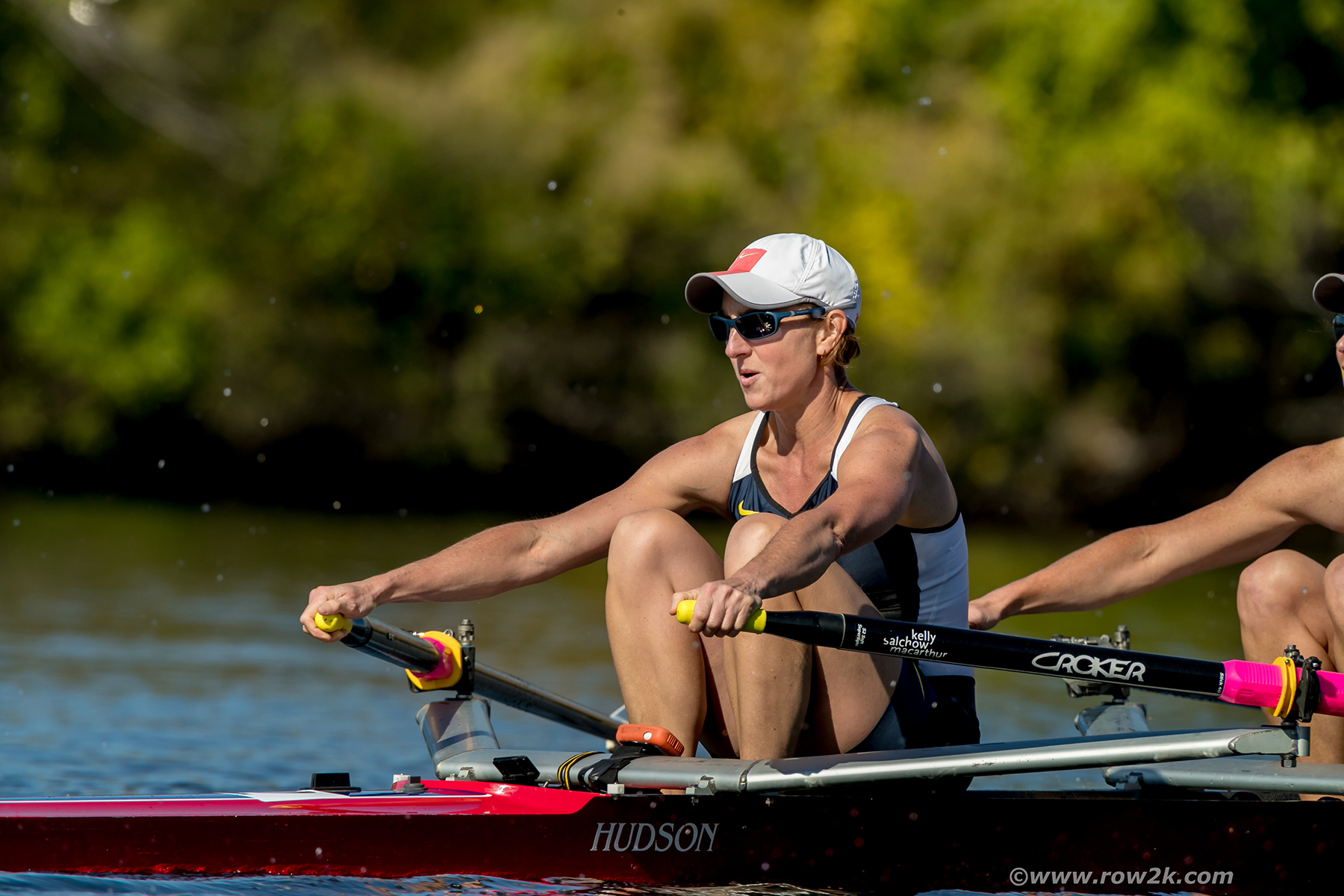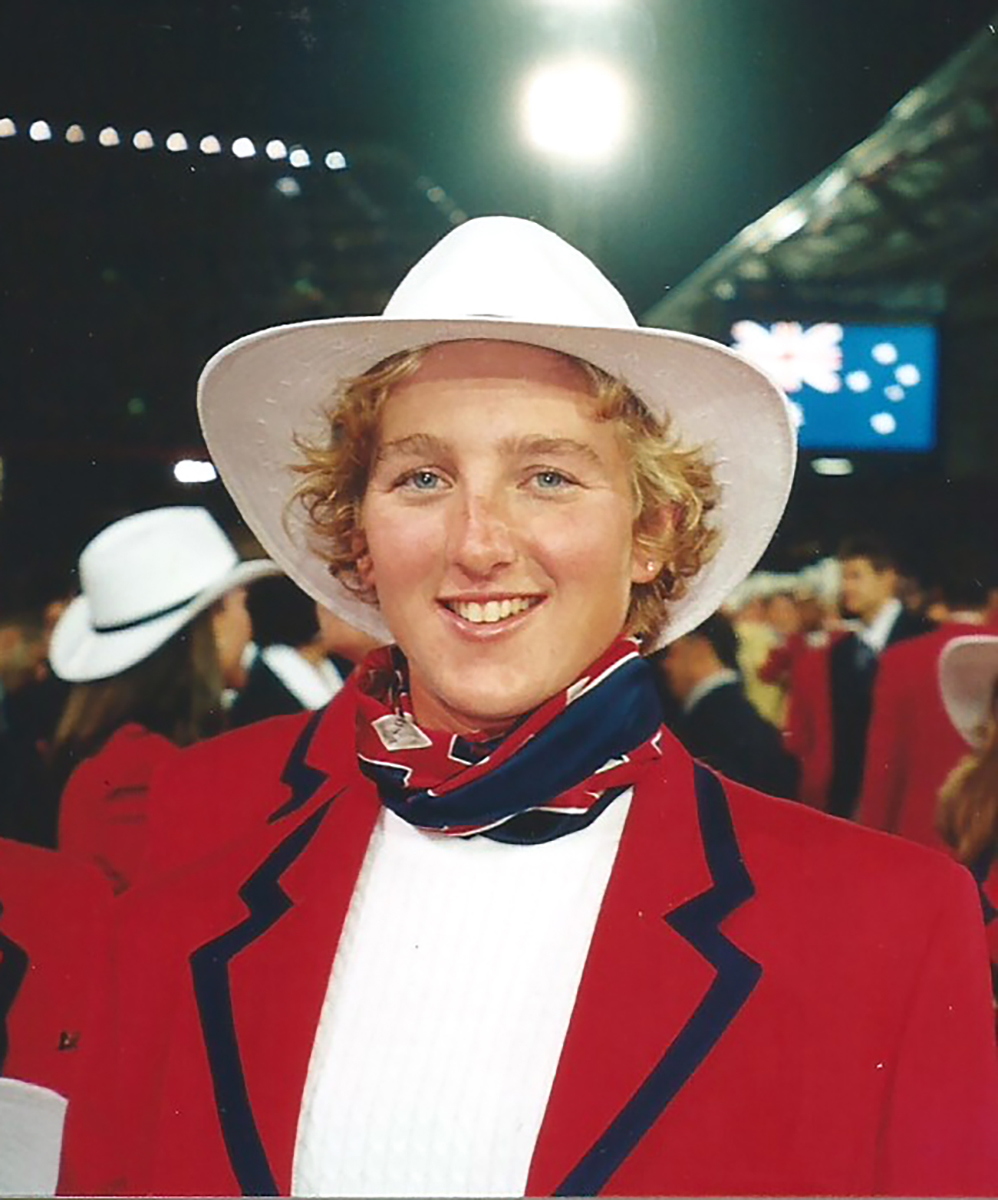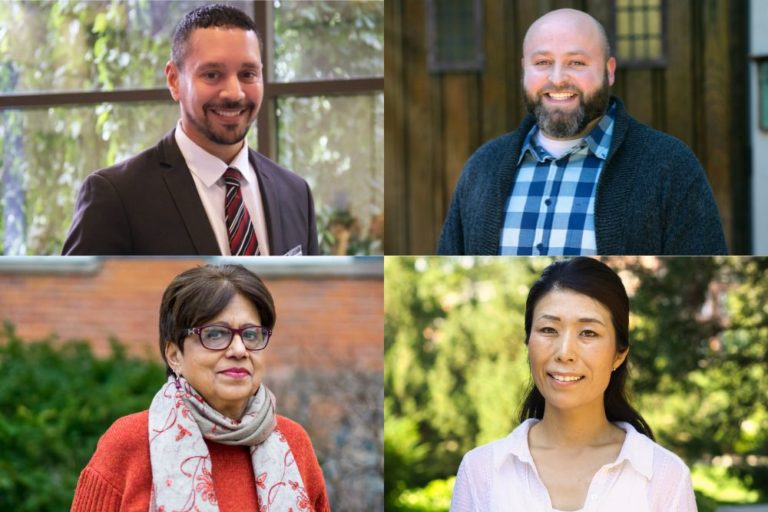
Kelly Salchow MacArthur grew up loving art. She also loved athletics. Some told her she couldn’t do both. Salchow MacArthur set out to prove she could.
This determination led her down two different paths that eventually intersected. One path earned her two trips to the Olympics as a member of the 2000 and 2004 United States National Women’s Rowing Team, the other brought her to Michigan State University where she’s now a Professor of Graphic Design in the Department of Art, Art History, and Design.
This year, Salchow MacArthur’s seemingly incongruous passions have merged as she makes her third Olympic appearance, this time as an Olympian Artist-in-Residence with the 2020 Summer Olympic Games hosted by Tokyo.
“I’m completely thrilled. This is such a high point in my career, and one of the few times that my design and rowing have intersected so clearly,” Salchow MacArthur said. “It’s the perfect confluence of opportunities and a way to help tie our global community together.”
Strengthening Values
Salchow MacArthur is among six Olympians and Paralympians participating in the inaugural Olympic Agora, which blends sport and culture through art installations and events set in the heart of the host Olympic city. This initiative runs July 1-August 15, 2021 — just prior to, during, and a week following the Olympic games scheduled for July 23-August 8, 2021. Salchow MacArthur will be virtually “on-site” from her residence in Michigan.

The Olympic Agora evolved from a set of detailed recommendations by the International Olympic Committee to safeguard Olympic values and strengthen the role of sport in society. Spearheaded by the Olympic Foundation for Culture and Heritage, the project is inspired by the public assembly spaces, or agoras, of ancient Greece.
As an artist-in-residence, Salchow MacArthur’s artistic vision is now on display as part of the Noren Curtains Project, which pays tribute to the Japanese Noren, a traditional curtain-like fabric typically hung in shop entrances. For the Olympic Agora, each artist-in-residence created a series of 10-foot by 4-foot panel curtains displaying the Olympic spirit and values. Artists worked in their preferred medium — be it photography, painting, graffiti, and in Salchow MacArthur’s case, graphic design.
“I believe we all are in need of reinvigoration after a hard year. I’m excited to share with other people, through my work, to help build on that sense of hope and enthusiasm the Olympics can bring.”
“We were asked to envision global harmony, determination, and resilience — all in context of the Olympics and COVID,” Salchow MacArthur said. “Our goal was to think of how sports ties us all together as a global community. I worked metaphorically with elements of abstraction, color, and typography, overlaid on images of the natural world.”
As part of her residency, Salchow MacArthur also will host an online workshop from her home. Coordinated through worldwide Olympic partner Airbnb, the two one-hour sessions will challenge participants to express themselves through collage while exploring how sport and art can motivate and inspire.
Dual Inspirations
Salchow MacArthur came of age surrounded by art. Her parents were both graphic designers and artists. Posters and artwork enlivened her childhood home in Cincinnati, and her father’s mural work emboldened the city’s downtown.
“At the same time, my sister and I were also very active,” she said. “We were on the swim team and played soccer. It was a balance of creativity and physical challenge.”

At 14, Salchow MacArthur started rowing and immediately fell in love with the sport. When it came time for college, she wanted to pursue rowing and graphic design, and chose a university that offered both. After graduating from the University of Cincinnati, she accepted a graphic design job in Philadelphia and rowed for the Pennsylvania Athletic Club.
After almost three years of rowing, working, and round-the-clock discipline, Salchow MacArthur reached a turning point. She wanted to attempt to make the Olympic Team. But she knew, too, it would mean putting her graphic design career on hold.
“My boss was a great mentor,” she said. “He was also one of my biggest fans. He told me I needed to take advantage of this rare opportunity and to go for the Olympics.”

Salchow MacArthur admits she often felt torn, but she was persistent and believed in herself. She recalls the workouts and the endless days, months, and years of training. Sometimes, she said it was hard to wrap her head around everything or to shake the feeling that she was an underdog. But she did.
“I remember walking into the Opening Ceremony in Sydney, wearing the cowboy hat and red, white, and blue blazer, and thought, ‘how did Kelly from Ohio make it here?’ It was so many years in the making,” she said. “I am extremely grateful for the path I was lucky to follow.”
Motivated by Challenge
In between the Sydney and Athens games, Salchow MacArthur earned a master’s degree from the Rhode Island School of Design. Never far from a body of water, she coached, rowed, and trained while managing to balance her two passions through extreme discipline.
She is now retired from elite athletic competition, but still continues to row. It’s an activity, she said, that connects her to nature as well as inspires her creative work.

“When I was in training, it was all about competition, speed, and performance,” Salchow MacArthur said. “Now, it’s more about technique, enjoyment, and meditation. Rowing is such an amazing sensation. You’re gliding just a few inches above the surface of the water. All my years in the boat have really connected me to water and the natural environment. That’s the main content I focus on in my graphic design work.”
Salchow MacArthur’s work explores environmental issues by integrating materials, production technology, format, and volume. Spending 30-plus years on the water gave her first-hand knowledge of the effect human activity has on natural resources. She’s observed that some waterways are cherished, while others are so polluted it’s a danger to let the water touch your skin.
“I keep going back to the urgency and necessity of human and natural balance,” she said. “Our very existence depends on saving the environment and tipping the balance back. I like to believe my work is impactful in delivering that message.”
I really fell in love with MSU the moment I saw the Red Cedar River winding through campus. It’s just the perfect place for me — a land-grant institution so tied to the natural environment. It’s true synergy.
Salchow MacArthur’s Noren Curtain design for the Olympic Agora builds on her connection to nature and on the Olympic themes of unity. Entitled “Together in Sport,” each of the five panels represents a singular concept of peace, joy, hope, honor, and sport, resulting in a unified narrative that celebrates the human spirit. Her design draws on her nature photos, some from Michigan, including images of Pictured Rocks National Lakeshore, native plants and grasses, and the sun reflecting on Michigan waterways.
Always up for the next challenge, Salchow MacArthur said she is looking ahead to a potential reunion of her former Olympic quad, perhaps at the Head of the Charles Regatta in Boston. She also looks forward to being back on campus this fall, to teaching in person, and to visiting the Red Cedar River.
“I really fell in love with MSU the moment I saw the Red Cedar River winding through campus,” she said. “It’s just the perfect place for me — a land-grant institution so tied to the natural environment. It’s true synergy.”


